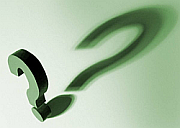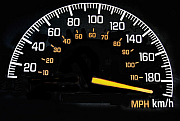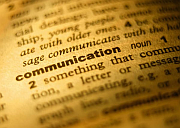Let It Ride Quiz
by John Grochowski
Learn Poker has a Let It Ride Quiz so you can test the ins, outs and strategies of this poker game.
Like many casino games that have their roots in the 1990s, this game and Let It Ride Quiz is based on five-card stud poker.
This is not a game of beat the dealer; it's a game of looking for the best poker hand possible, with payoffs made according to a video poker-like pay table.
Let's begin the Quiz.
Let It Ride Quiz 1 - 3
1) When playing with a $5 minimum posted, a player must initially wager at least $15, but his real minimum risk per hand is:
A. $5
B. $10
C. $15
2) Compared with other poker-based table games, the frequency of winning hands is
A. Relatively high.
B. Relatively low.
C. About average.
3) The minimum hand for a payoff is
A. Ace-King high.
B. Any pair
C. A pair of 10s
Let It Ride Quiz 4 - 7
4) Without making a side bet, a player has a chance at the largest potential jackpot in
A. Caribbean Stud.
B. Let It Ride.
C. Three Card Poker Pair Plus.
D. Three Card Poker vs. the dealer.
5) In this game, an aggregate limit on winnings
A. Puts a cap on a potential jackpot.
B. Some bets may be paid at less than posted odds.
C. Raises the house edge.
D. All of the above.
E. None of the above.
6) If the player's first three cards are 6-7-8 of mixed suits, the player should

A. Pull back the first bet.
B. Let it Ride.
7) If the player's first three cards are Ace-9-9,
the player should
A. Pull back the first bet.
B. Let It Ride
Let It Ride Quiz 8 - 10
8) If the player's three cards plus the first community card are 2-6-9-Jack, all of hearts, the player should
A. Pull back the second bet
B. Let It Ride.
9) If the player's three cards plus the first community card are 5-6-8-9 of mixed suits, the player should
A. Pull back the second bet
B. Let It Ride.
10) If the player's first three cards plus the community card are 7-8-9-10 of mixed suits, the player should
A. Pull back the second bet.
B. Let It Ride.
Let It Ride Quiz Answers
1) A. $5. You start with three equal-sized bets, each at least meeting the table minimum. However, after you've seen your own three cards, you may pull back one bet. And after you've seen the first common card, you may pull back the second bet.
2) B. The frequency of winning hands is relatively low, compared with other poker-based table games. You will win about 24 percent of our hands in Let It Ride, compared with 26 percent in Three Card Poker's Pairs Plus option, 38 percent in Caribbean Stud and 42 percent in Three Card Poker ante and bet against the dealer.
However, because many Let It Ride hands are paid at even money, there is not a large gap in the house edges among those commonly played games.
In the original pay table offered, the house edge in Let It Ride is 3.5 percent of one wager, or 2.8 percent of total action, while in Caribbean Stud the house edge is 5.2 percent of the ante or 2.6 percent of total action. In Three Card Poker, house edges are
2.3 percent on the best Pair Plus pay table, and 3.4 percent of the ante or 2.0 percent of total action in ante-and-bet.
Let It Ride Quiz Answers 3 - 5
3) C. The minimum paying hand is a pair of 10s, which brings an even-money payoff.
4) B. Let It Ride. The 1,000-1 payoff on a royal flush in Let It Ride is the biggest we'll find with no side bet. Caribbean Stud pays only 100-1 on royals, Three Card Poker Pair Plus pays 40-1 for a straight flush and Three Card Poker vs. the dealer adds a 5-1 straight flush bonus to the even-money payoff we're likely to win on the basic game.
In the original, and still most common, pay table, you'll get even money if the final five-card poker hand is a pair of 10s or better, 2-1 on two pair, 3-1 on three of a kind, 5-1 on straights, 8-1 on flushes, 11-1 on full houses, 50-1 on four of a kind, 200-1 on straight flushes or 1,000-1 on royal flushes.
5) D. All of the above. An aggregate limit puts a cap on a potential jackpot, means that some bets may be paid at less than posted odds and raises the house edge.
I've seen casinos put a $15,000 aggregate limit on winnings. Bet $5 per spot and get a royal flush and you get the full 1,000-1 payoff. But if you bet $10 on each of the three spots, spot, 1,000-1 would give you $30,000.
A $15,000 limit would mean you're paid only 500-1, in effect lowering the pay table and raising the house edge.
Let It Ride Quiz Answers 6 - 8
6) A. Pull back the first bet. If straights happen with the last bet on the line, great, but we don't play for them on the first and second bets.
If the 6-7-8 were all the same suit, giving us a chance at a flush or straight flush as well as a straight possibility, then we'll leave the first bet on the table.
7) A. Pull back the first bet. With no straight flush possibilities, we'll only leave the first bet on the table if we have a winning hand made. That means a pair of 10s or better, not 9s or less.
8) B. Let It Ride. With four cards of the same suit, you have 9 chances in the 48 cards you've not seen to complete a flush, so you'll complete one flush per 5.3 hands in that situation.
With an 8-1 payback on flushes, the odds are in your favor, and well worth leaving that second bet in action.
Let It Ride Quiz Answers 9-10
9) A. Pull back the second bet. This is an ‘inside’ straight draw, with the card needed to complete the straight being ‘inside,’ or between, the 6 and 8. Only four cards will complete this straight --- the four 7s. There is a 4 in 48, or 1 in 12, chance of ending up with a straight.
Those odds are far longer than the 5-1 payoff on straights, so we pull back the second bet.
10) B. Let It Ride. This time we have a straight that's open on both ends. It can be completed with either a 6 or a Jack, so 8 of the remaining 48 cards will give us a straight and a 5-1 payback. Most of the time, that's a break-even situation.
For every six times we have a four-card open ended straight, we will lose five hands and win one. With $5 wagers, that means we lose $25 on the five losing hands, but win $25 with a 5-1 payoff on our one straight.
This example, though, is better than break-even. In addition to the eight cards that will complete a straight, the three remaining 10s in the deck would give us a winning hand of a pair of 10s or better, making 7-8-9-10 a profitable situation.
Rule of thumb: Four-card open-ended straights whose highest card is 9 or lower are break-even situations, and it's up to you whether to gamble and let the second bet ride.
If the high card is 10 or higher, it's a profit-making situation, and to your advantage to Let It Ride.
Let It Ride Quiz is followed by Online Strategies
OR
How to Play Poker 1 Program
OR
Learn Poker Games 2 with 7 Game Types
GT is attentive about getting the word out about our free programs, lessons and add-ons offered, however, we ask your assistance and consideration in promoting us.
Click link below that reads, "Enjoy this page? Please pay it forward. Here's how..." to add a link to your site, blog or personal page.





